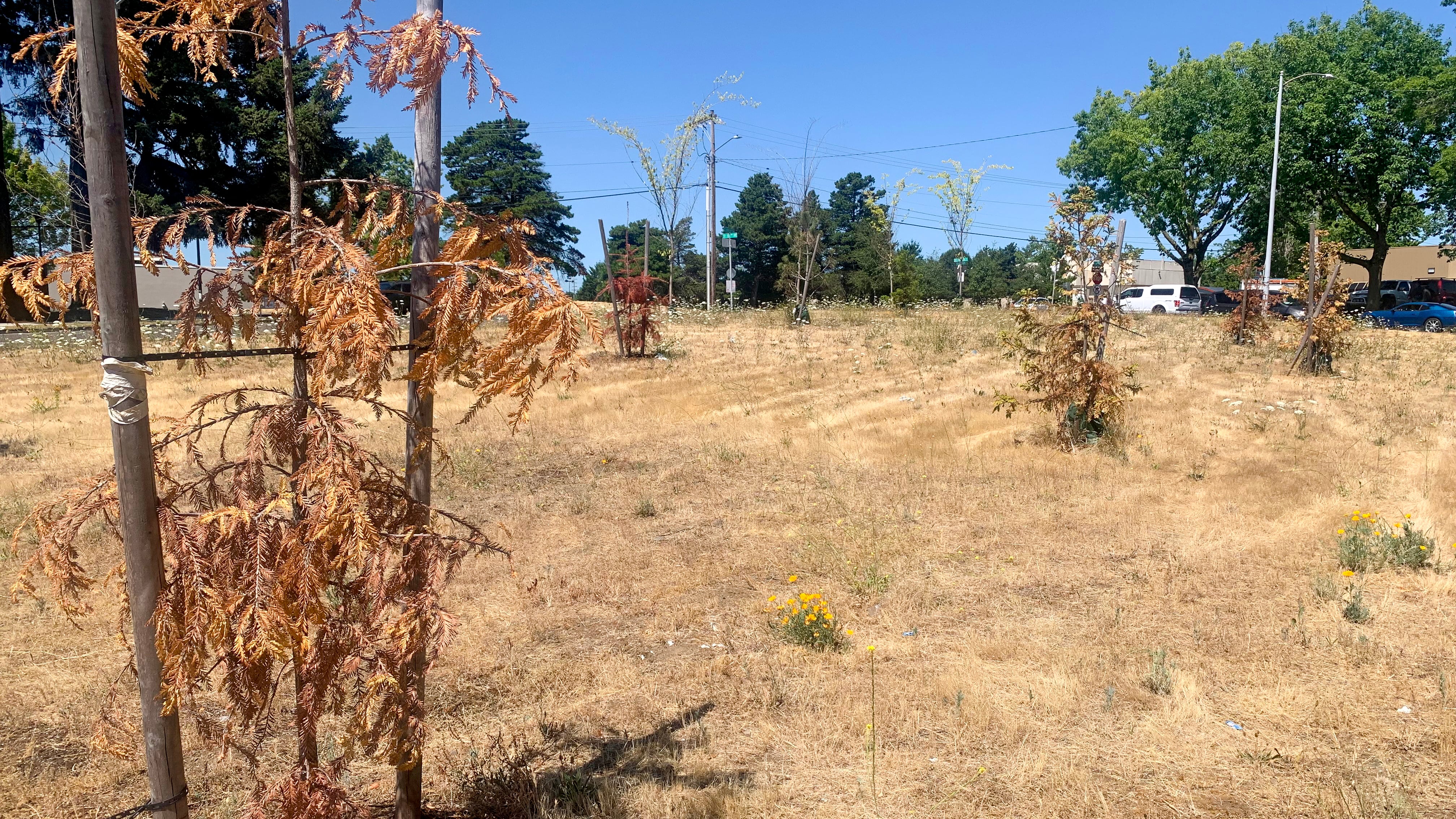The Portland Bureau of Transportation used federal infrastructure dollars a little more than two years ago to plant about 30 saplings in a grassy triangle in the East Portland neighborhood of Mill Park between Southeast 103rd Avenue and Cherry Blossom Drive.
The trees included Douglas firs, Japanese maples and redwoods, according to labels still affixed to the saplings. The city paid a contractor to do the planting over a yearlong period, and then to water the trees for the next calendar year, filling heavy-duty green bags around the bases of the young trees with 15 to 20 gallons of water every week.
The city’s contract with that company ended March 31 of this year, according to PBOT spokeswoman Hannah Schafer. From that point onward, PBOT—the owner of the triangle—became responsible for maintaining the new trees.
Just one problem: The bureau acknowledges it hasn’t continued to water the trees. Now, some of the saplings will likely have to be ripped out because they are dead or dying of thirst.
“It’s a big disappointment, but not surprising,” says Ray Johnson, who lives nearby. “I can’t help but think that if these trees had been planted in a more affluent part of the city, say the West Hills, they wouldn’t have forgotten to water them.”
Schafer says watering trees is outside the bureau’s scope: “We only trim trees for visibility and clear brush. We simply are not set up for nor have the skills for tree maintenance beyond that.”
Watering skills aside, at least 25 of the trees in the triangle appeared beyond salvation last week. About a third of the ailing trees are long and spindly Japanese maples without a single leaf on any of the bone-dry branches. Other dead trees include stout and bushy Douglas firs, their needles brown and brittle.
For years, city leaders have focused tree-planting efforts in East Portland, where research by Portland State University’s Urban Studies and Planning Department shows the tree canopy is less than half of what it is on the west side of the Willamette River. Climate researchers have warned that areas with less tree coverage mean less protection from the sweltering sun and more deaths due to climate disaster.
That warning bore out in the summer of 2021 during the deadly heat wave that killed 69 Portlanders. Four ZIP codes east of 42nd Avenue accounted for nearly a quarter of the city’s heat deaths last summer.
PSU climate researcher Vivek Shandas, who maps heat islands in Portland, told WW in 2021 that the deaths in East Portland that summer should have come as no surprise. “We had so much evidence to show this was a likely outcome,” Shandas said at the time. “Without direct mitigation of these places that are often 15, 20 degrees hotter, we’re going to continue seeing people die.”
PBOT’s failure to water its 30 trees in the traffic median is the second time this year that government officials have failed to protect tree canopy. An ongoing street-widening project along a 67-block stretch of Southeast Powell Boulevard means the state is currently chopping down 570 trees lining the road, WW reported in June.
“We care very much about adding trees where we can in our projects to help combat the heat island effect, especially in neighborhoods in East Portland where that issue is so prevalent,” Schafer says, adding that if the trees in the triangular island need to be ripped out and replaced, it likely won’t happen until next spring.
In the meantime, Schafer says, PBOT is “working with Portland Parks & Recreation’s Urban Forestry team to evaluate potential options around caring for these trees.”
